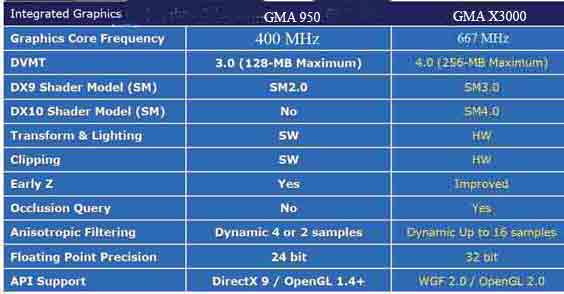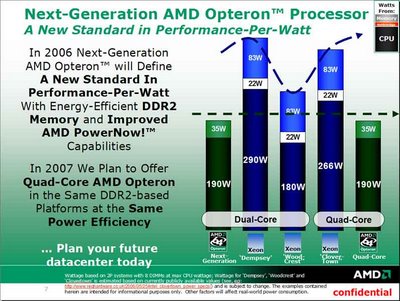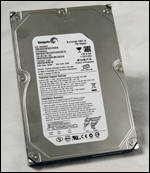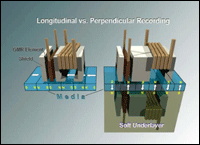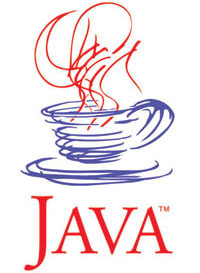NVIDIA is set to launch its upcoming G80 GeForce 8800GTX and 8800GTS graphics cards next week. The GeForce 8800GTX used for testing is equipped with 768MB of GDDR3 video memory on a 384-bit memory bus as previously reported. Core and memory clocks are set at 575 MHz and 900 MHz respectively. Other GeForce 8800 series features include 128-bit HDR with 16x anti-aliasing and NVIDIA’s Quantum Physics Engine.
The physical card itself is quite large and approximately an inch and a half longer than an AMD ATI Radeon X1950 XTX based card. It requires two PCI Express power connectors
 and occupies two expansion slots. An interesting tidbit of the GeForce 8800GTX are the two SLI bridge connectors towards the edge of the card. This is a first for a GeForce product as SLI compatible graphics cards typically have one SLI bridge connector.
and occupies two expansion slots. An interesting tidbit of the GeForce 8800GTX are the two SLI bridge connectors towards the edge of the card. This is a first for a GeForce product as SLI compatible graphics cards typically have one SLI bridge connector.Moving onto the performance Half Life 2: Lost Coast, Quake 4, Prey and 3DMark06 were benchmarked. These games and applications were selected as other games use the same game engine.
The test system configuration is as follows:
- Intel Core 2 Extreme QX6700
- NVIDIA nForce 650i SLI based motherboard
- 2x1GB PC2-6400
- NVIDIA GeForce 8800GTX
- PowerColor ATI Radeon X1950 XTX
- Western Digital Raptor 150
| Futuremark 3DMark06 | ||
| Radeon X1950 XTX | GeForce 8800GTX | |
| Score | 7026 | 11200 |
Kicking off the benchmarking festivities is 3DMark06. NVIDIA’s GeForce 8800GTX scores 59% higher than ATI’s current flagship. This isn’t too surprising as the GeForce 8800GTX has plenty of power.
Half Life 2: Lost Coast loves the GeForce 8800GTX. Here the GeForce 8800GTX is able to show significant performance gains over AMD’s ATI Radeon X1950 XTX—approximately 92%.
Quake 4 shows similar gains as Half Life 2: Lost Coast too, an approximate 92% improvement.
Prey is based on the same game engine as Quake 4. However, Prey shows smaller performance differences between the GeForce 8800GTX and ATI Radeon X1950 XTX, albeit its still 60%.
| Half Life 2 4xAA/16xAF 1600x1200 | ||
| Radeon X1950 XTX | GeForce 8800GTX | |
| FPS | 60.74 | 116.93 |
| Quake 4 4xAA 1600x1200 | ||
| Radeon X1950 XTX | GeForce 8800GTX | |
| FPS | 34.23 | 65.93 |
| Prey 4xAA/16xAF 1600x1200 | ||
| Radeon X1950 XTX | GeForce 8800GTX | |
| FPS | 55.53 | 88.87 |
Half Life 2: Lost Coast loves the GeForce 8800GTX. Here the GeForce 8800GTX is able to show significant performance gains over AMD’s ATI Radeon X1950 XTX—approximately 92%.
Quake 4 shows similar gains as Half Life 2: Lost Coast too, an approximate 92% improvement.
Prey is based on the same game engine as Quake 4. However, Prey shows smaller performance differences between the GeForce 8800GTX and ATI Radeon X1950 XTX, albeit its still 60%.
| Power Consumption | ||
| Watts | Radeon X1950 XTX | GeForce 8800GTX |
| Idle | 184 | 229 |
| Load | 308 | 321 |
Power consumption was measured using a Kill-A-Watt power meter that measures a power supply’s power draw directly from the wall outlet. The power supply used in the test system is a Thermaltake Toughpower that carries an efficiency rating up to 85%.
Expect NVIDIA’s GeForce 8800GTX and 8800GTS graphics cards to be available next week. As NVIDIA has had plenty of time to ramp up production and ship out cards, this will be a hard launch with immediate availability.
Expect NVIDIA’s GeForce 8800GTX and 8800GTS graphics cards to be available next week. As NVIDIA has had plenty of time to ramp up production and ship out cards, this will be a hard launch with immediate availability.

